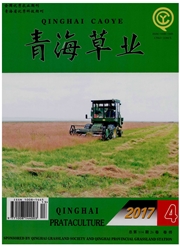

 中文摘要:
中文摘要:
青海湖流域位于青藏高原高寒区,是全球生态变化的敏感地区之一。在3S技术的基础上,利用土地利用转移矩阵,土地利用动态度模型全面揭示研究区25年的LUCC时空变化特征,并借鉴已构建的景观弹性度指数分析了研究区的景观生态系统稳定性。结果表明,1977~2000年青海湖流域刚察县土地利用类型已经发生了较大变化:生态用地数量逐渐减少,生产用地、退化土地面积不断增加;县内1987~2000年冰川及永久积雪面积减少速率显著上升达7.7%,而裸岩沙地面积增加速率显著上升达0.41%,其他主要类型土地面积变化速率不断减缓;从1977~2000年,刚察县景观弹性度持续增加,维持景观稳定性的能力相对较高,生态系统健康状态也较高。
 英文摘要:
英文摘要:
Qinghai Lake basin in the Qingbai -Tibet Plateau alpine zone, is sensitive to global ecological change, one of the regions. In the 3s on the basis of technology, using the transfer matrix of land use, land - use dynamic degree model for a comprehensive study area revealed a 25 - year LUCC spatial and temporal variation and learn from the landscape has been built elasticity index analysis of the study area landscape ecosystem stability. The results showed that : 1977 - 2000 Gangcha County in Qinghai Lake basin land - use types have been major changes: a gradual reduction in the number of ecological land, productive land, increasing the area of land degradation; since 1977 ,The county from 1987 to 2000 an area of glaciers and permanent snow cover increased significantly reduce the rate of up to 7. 692 percent, while from 1987 to 2000 bare rock sandy area increasing rate increased significantly by up to 0.41 Percent, the other major types of Land area change rates continue to slow down; from 1977 ~ 2000, the degree of elasticity Gangcha County landscape continues to grow, the ability to maintain a relatively high stability of the landscape, ecosystem health is also high.
 同期刊论文项目
同期刊论文项目
 同项目期刊论文
同项目期刊论文
 期刊信息
期刊信息
